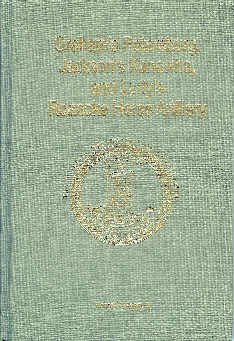 |
Graham's Petersburg, Jackson's Kanawha, and Lurty's Roanoke Horse Artillery by Robert H. Moore, II (Published by H. E. Howard, Inc., 1996) 140 pages including maps, photographs, rosters, and bibliography ISBN 1-56190-097-4 For pricing and availability contact: H.E. Howard, Inc. Rt. 2 Box 496H Appomattox, Virginia 24522 |
About the Book: